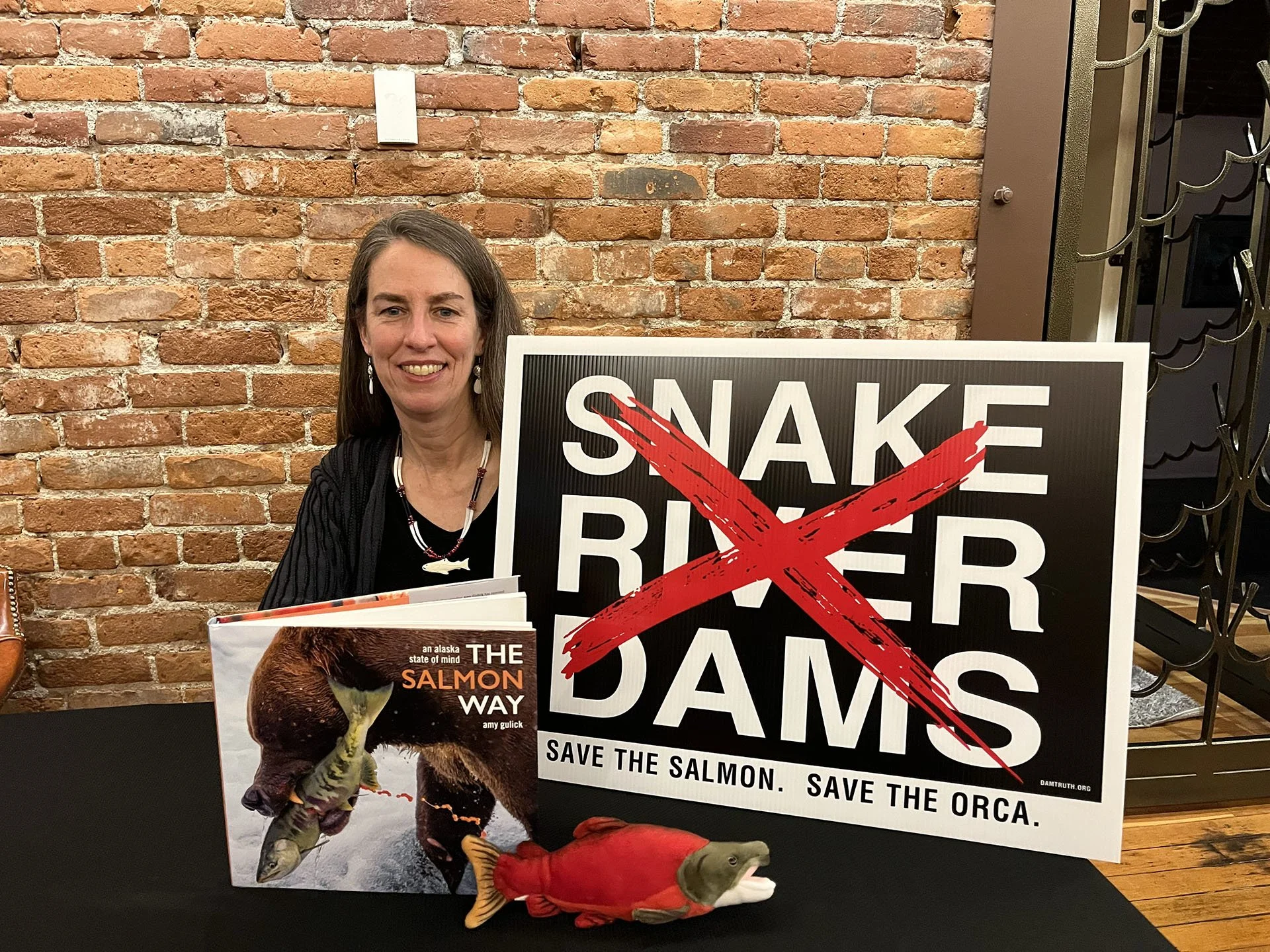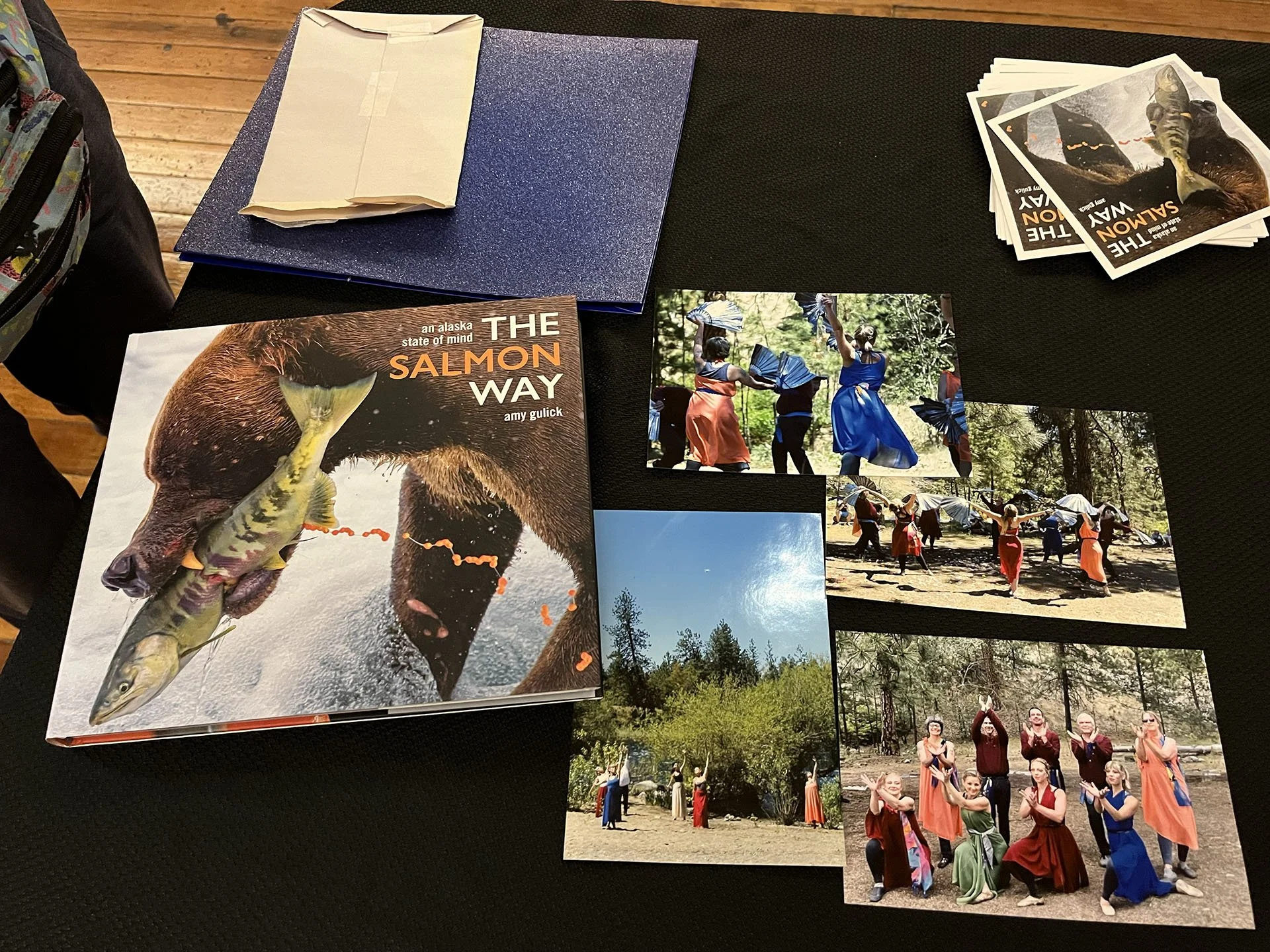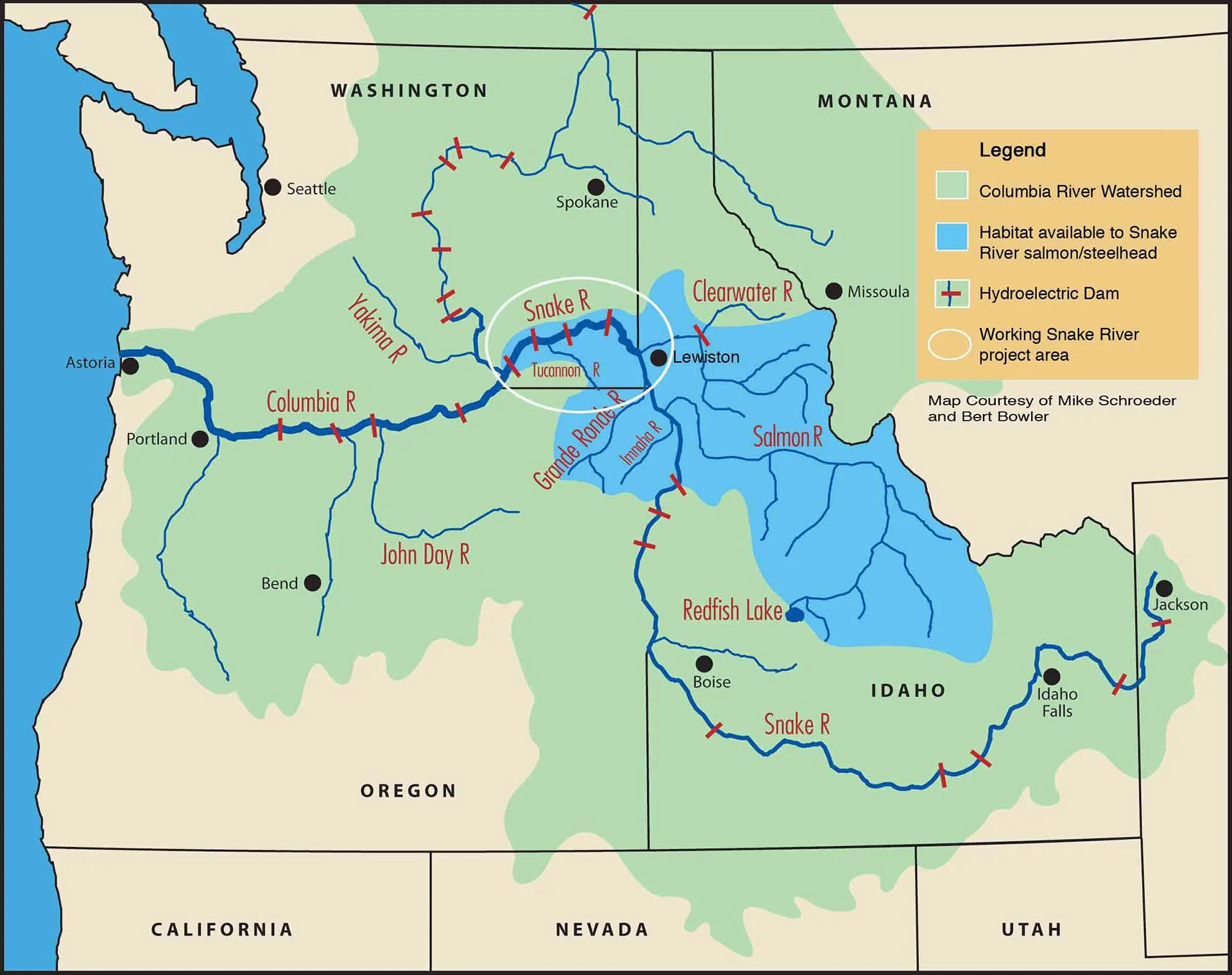Our Salmonshot
By Amy Gulick, Safina Center Fellow
Amy Gulick speaks about the relationships between people and wild salmon featured in her book, The Salmon Way, at the Stop Salmon Extinction speaker series hosted by Save Our Wild Salmon. ©Amy Gulick/amygulick.com
In March 2022, just before the start of a public presentation in Spokane, Washington, I felt something I hadn’t experienced in two years—jitters. This was only the second in-person presentation I’d given since the world went into a pandemic-induced lockdown in March 2020. I wasn’t nervous to speak. I was worried that no one would come. How long would it be before people felt safe gathering again in person? For humans, a pandemic is a waiting game. But for wild salmon facing extinction in the Pacific Northwest, time is running out.
The doors opened for the event and people filed in with purpose, like salmon returning to their birth streams. My jitters evaporated. A masked woman approached me clutching a folder in her hands.
“Are you Amy?” she asked. “I brought something to show you.”
Dressed in the deep spawning colors of salmon, dancers commemorate the salmon of the Pacific Northwest. ©Amy Gulick/amygulick.com
She spread photographs on a table. Photographs of dancers adorned in the deep spawning colors of salmon—red, green, blue, orange. Dancers along a river celebrating the salmon that once returned there. Dancers remembering a salmon-filled past and hoping for a salmon-filled future.
“Being a part of this beautiful dance ceremony to honor the salmon was one of the most moving things I’ve ever done in my life,” she said. Her voice quavered. Her eyes teared up, and so did mine.
Salmon have that power. There’s something about the heroic journey of these remarkable fish that pierces our hearts, evokes gratitude, and helps us accept our own mortality. We cry with joy upon seeing salmon return to their home streams; we cry with sorrow when they don’t.
The four dams on the lower Snake River are the single largest source of human-caused mortality to the river’s salmon populations. There is an opportunity now to remove those dams, which will give the endangered Snake River salmon populations their best shot at recovery.
I was in Spokane for the Stop Salmon Extinction speaker series hosted by Save Our Wild Salmon, a diverse coalition working for more than three decades to restore wild salmon to the Columbia-Snake River Basin in the Pacific Northwest. I was there to speak about The Salmon Way, my book that celebrates the relationships between people and wild salmon, and to talk about an urgent opportunity to restore endangered salmon in the Snake River, the largest tributary to the Columbia River.
Four dams on the lower Snake River are the single largest source of human-caused mortality to the river’s salmon populations. The spawning grounds above the dams are some of the best habitat in the contiguous United States. While there are fish ladders for the salmon to navigate past the dams, the dams’ reservoirs create a deadly environment of warm water and increased predation that is killing the fish. The best science—from state, tribal, and federal fisheries agencies—is clear: If the dams are not removed, the fish will go extinct. Removing these four dams will increase the survival rates of Snake River salmon to a sustainable level. The fate of the fish lies in a political process now underway to authorize the removal of the dams. But the path forward is fraught with potential obstacles—politics, apathy, an upcoming mid-term election, resistance to change, and a ticking extinction clock.
There are moments in time when certain events change the course of history: the end of slavery, women’s right to vote, and putting a man on the moon come to mind. We are standing right now in one of those moments. What’s our moonshot? I’m going to call it our salmonshot. Let this be the moment that we achieve the greatest salmon recovery in the Pacific Northwest. Let this be the moment that we rebuild our relationships with these iconic fish. Let this be the moment that our kids and grandkids can look to and say, “Thank you for bringing the salmon back for us.” Our window of opportunity is short and urgent. From now until July, we need to be loud, repetitive, and relentless. We can do this. This is our moment. This is our salmonshot.
Amy Gulick, Safina Center Fellow, is the author/photographer of The Salmon Way: An Alaska State of Mind and Salmon in the Trees: Life in Alaska’s Tongass Rain Forest.
To learn how you can help restore salmon in the Snake River, visit:
https://www.wildsalmon.org/projects/lower-snake-river-waterway/restoring-the-lower-snake-river.html



